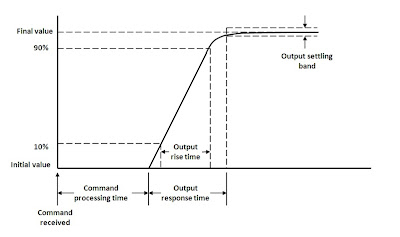Continuing on my throughput theme here, one
recommendation is to take advantage of the power supply’s status subsystem. Some
power supply operations take notably longer than most to complete than others. Two
notable examples:
- Initializing a triggered measurement
- Initializing a triggered output transient or output list event
When developing programs you can include long, fixed wait
statements to make certain these operations have completed before proceeding.
However, this can easily add many tens of milliseconds or more of unnecessary
waiting, increasing overall test time. A
better way is to take advantage of the DC power supply’s status subsystem
features that eliminate unnecessary waiting for these operations.
Triggered measurement and output sourcing events can
substantially speed up testing by providing actions tightly synchronized with
other test activities. But they do have some up-front set up overhead time
needed for initializing them. Instead of using a fixed programming delay
following an initialization operation it is better to take advantage of the Operation
Status Group register in the status subsystem, which is illustrated in Figure 1.
Figure 1: Agilent N6700 series DC power system operation status
group
The “WTG meas” bit (#3) or “WTG trans bit (#4) in the
condition register can be monitored with a loop in the test program to see when
they turn true. At the moment the measurement or output sourcing event is
initiated and ready for a trigger the test program will then proceed with its
execution without incurring any unnecessary additional waiting. This saves a
considerable amount of time as illustrated in Figure 2.
Figure 2: Operation-complete wait time distribution
Instead of waiting for the full worst-case each and every
time, the wait is now just the actual time. When repeated over and over for all
DUTs being tested, the net result is the average of the actual wait time, which
in most cases is just a small fraction of the worst case time! The net result
can be many tens of milliseconds test time savings, making an improvement in
test throughput.



